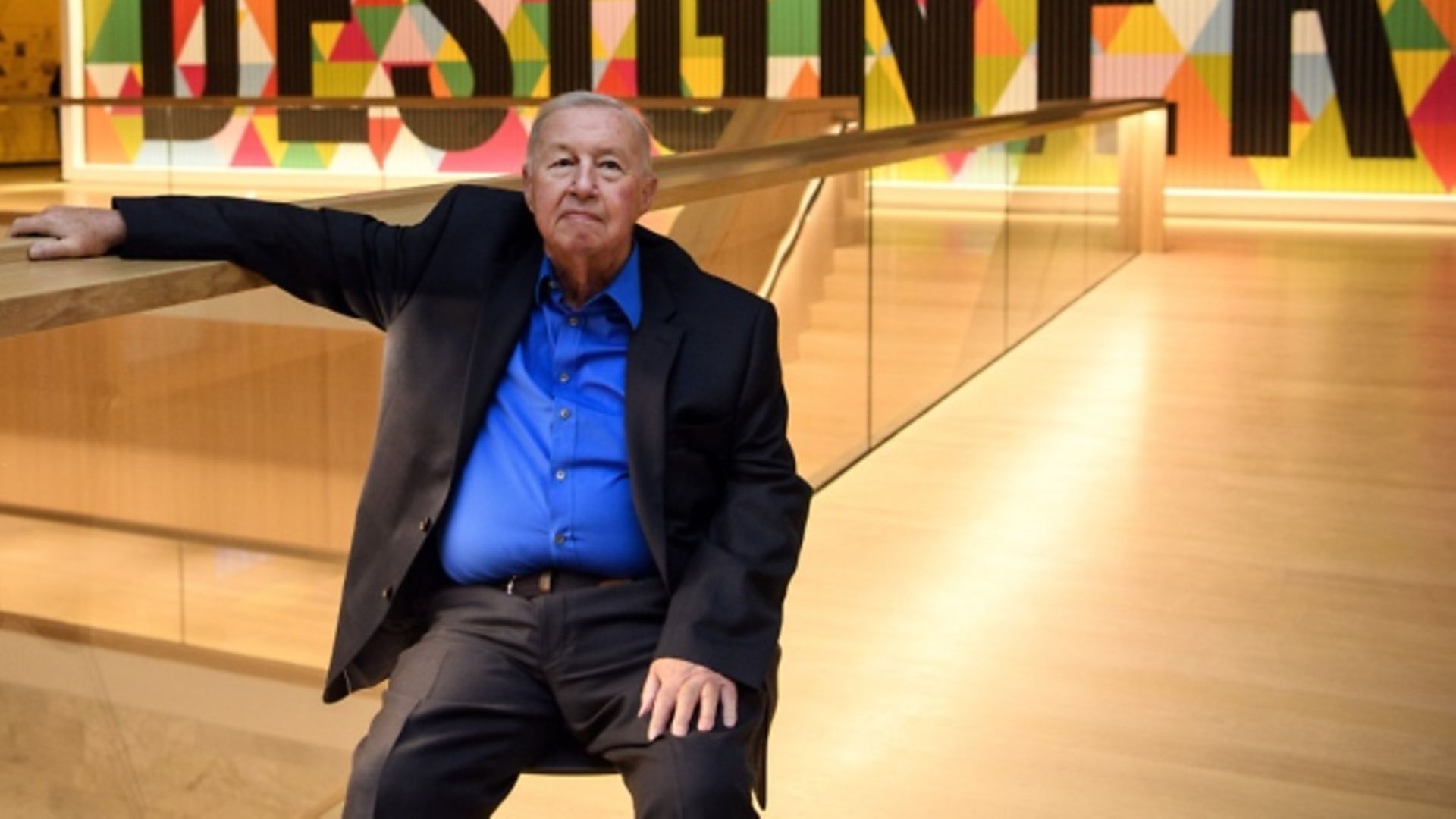
I remember having lunch with Terence Conran – who died last week, aged 88 – at his Bibendum restaurant on the Old Brompton Road sometime in the early 2000s. It was a bizarre experience: sitting on a banquette in an interior curated – if not exactly designed – by my companion, who was wearing a suit designed by his son, Jasper, and discussing his far-flung empire of stuff emporia and stuffing-your-bourgeois-face eateries. Still, this wasn’t the first time I’d deeply penetrated the world of Conran – back in the 1990s, I did a magazine feature that saw me attempting to live for a week entirely in Conran – and his extensive family’s – productions. I, too, wore a Jasper Conran suit; I dined at Quaglino’s or Mezzo or the Pont de la Tour every night; I was already hustling my youngest about in a pushchair designed by his son Sebastian, but during that week I thrust it to-and-from the Conran Shop, or Habitat, or the Bluebird Garage on the King’s Road, all the while assiduously reading one of his books on soft furnishings, or kitchen, or vegetables – for he was a prodigious would-be author as well.
At that lunch I was meant to be interviewing Conran, but there was none of the stand-offishness, or ill-concealed character armour I would’ve expected from such a high profile subject, especially one with a fair few stripped-pine and rag-rolled skeletons in his ample walk-in wardrobe – not least the collapse of his Storehouse Group a decade previously. Instead, he was emollient, chatty, and almost overly familiar. The explanation came during the cigars-and-coffee stage of the meal, when he sat back, placed marsupial paws over a little pouch of a paunch, and said – in response to some sally of mine: “Well, as you once said to me yourself, Will…” then proceeded to retail some little apercu or other, that, although long consigned to oblivion, I nonetheless recognised at the time as bearing the unmistakable mark of being the sort of thing I might well say.
I sat, stunned, searching my lint-furred memory banks – the reason being that I had absolutely no recollection of meeting Conran before at all, let alone an encounter significant enough for it to form the basis of anecdotage. Moreover, if there were a tale to be told, surely I – as the younger by some 30 years – would’ve been the teller? Anyway, I managed to keep my cool – helped mightily by the Hoyo de Monterrey petit robusto I was smoking – and took my leave, none the wiser as to the nature of mine and his relationship: were we mere acquaintances, old friends… former lovers, even?
Then, cycling back over Chelsea Bridge, and observing the – at that time – hollowed-out shell of Battersea power station, it struck me: of course Terence Conran knew me, because in an important sense he knew every British middle class person born after 1960. During lunch Conran had been animadverting on plans then afoot to move the Design Museum (at that time located near Tower Bridge), to the power station once it was refurbished. The museum had been his adoptive mind-child in the first place, but while I admired his enthusiasm, my feeling was that its existing premises were quite large enough – or, rather, that the entire country was already sufficiently replete with Conran’s own products and productions for such a gargantuan repository to be a mere synecdoche of that yet greater phenomenon: a British bourgeois culture that he’d played a leading role in creating.
My first trip, with my mother, to the newly-opened Habitat in Churchill Square in Brighton, took place in 1969. We wandered the aisles stunned by the clean lines and pleasing functionality of the home ware and furnishings – the store’s design was itself a gestalt: an assemblage of well-chosen artefacts that created a pleasing interior; and it was immediately clear that this represented an ideology of domesticity. Over the succeeding decades the Arne Jacobsen chairs, clay chicken bricks, enamelled coffee pots, and most especially globular paper-and-wire lampshades went forth and multiplied, and multiplied, and multiplied some more, until the expanding British middle class’s homes were as freighted with such artefacts as a pharaoh’s tomb with, um, funerary goods.
An apposite image given the recent demise of this Wizard of Odds and Sods – but it’s also fitting because the class he helped to create is now on its way out as well. Conran was never a great designer himself – more a pasticheur who mixed and matched the visions of others – and the middle class mores he inculcated his customers in the same philosophy of dilettantism and consumerism. In the 1970s, 80s and most conspicuously the 90s, Conran taught the British to eat ratatouille rather than read Racine, and to buy their aesthetic prêt-a-porter, rather than creating it for themselves. The Conran aesthetic of clean, Scandinavian functionalism bedizened with French cookware has metastasized into the social body; the vectors being such hard-selling flat-packers as Ikea. Now, you can walk almost any suburban semi-lined road in Britain and see some discarded stick of furniture or other that – albeit once or twice removed – is still one of Conran’s mind-children. As of course am I.









